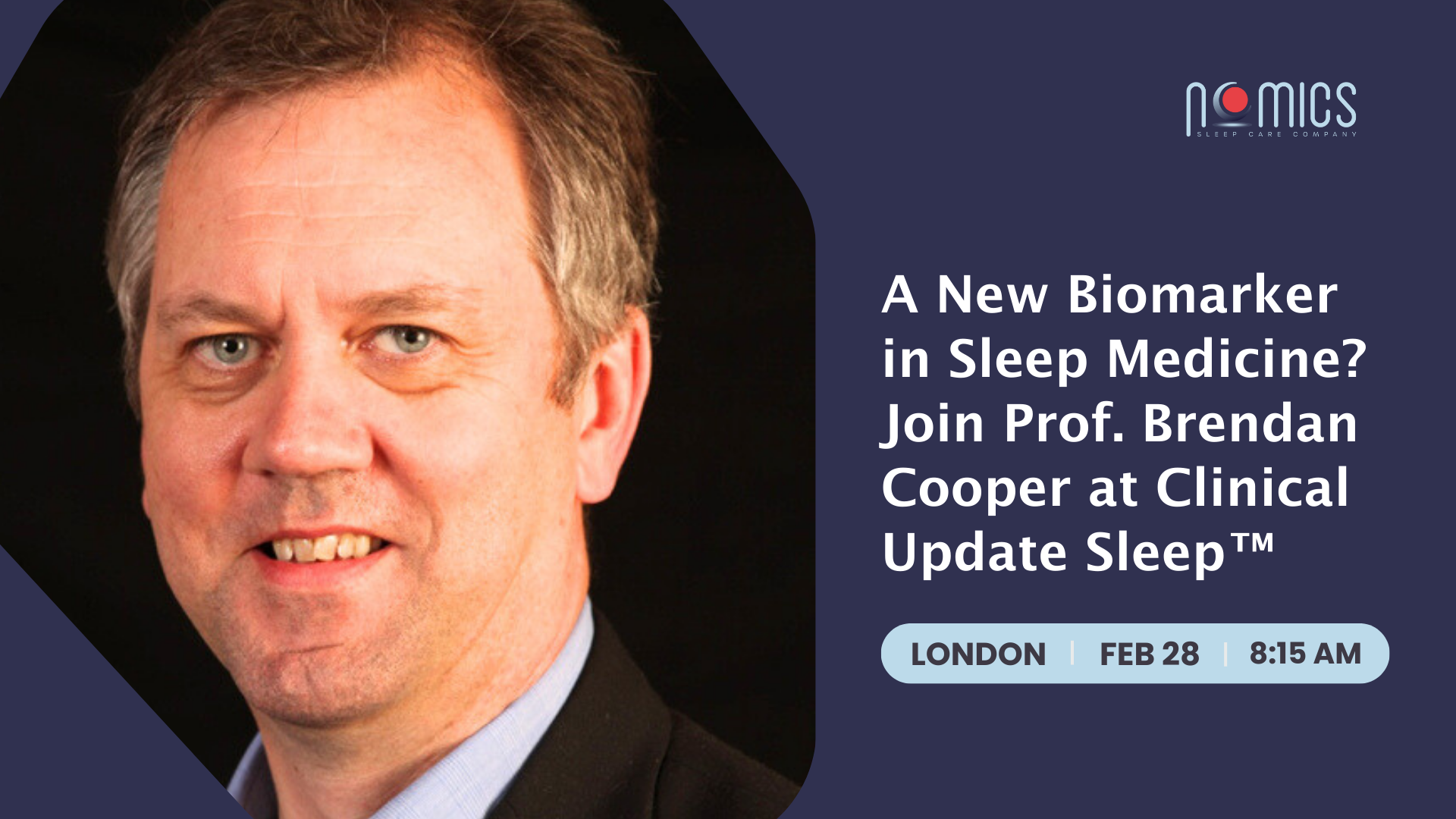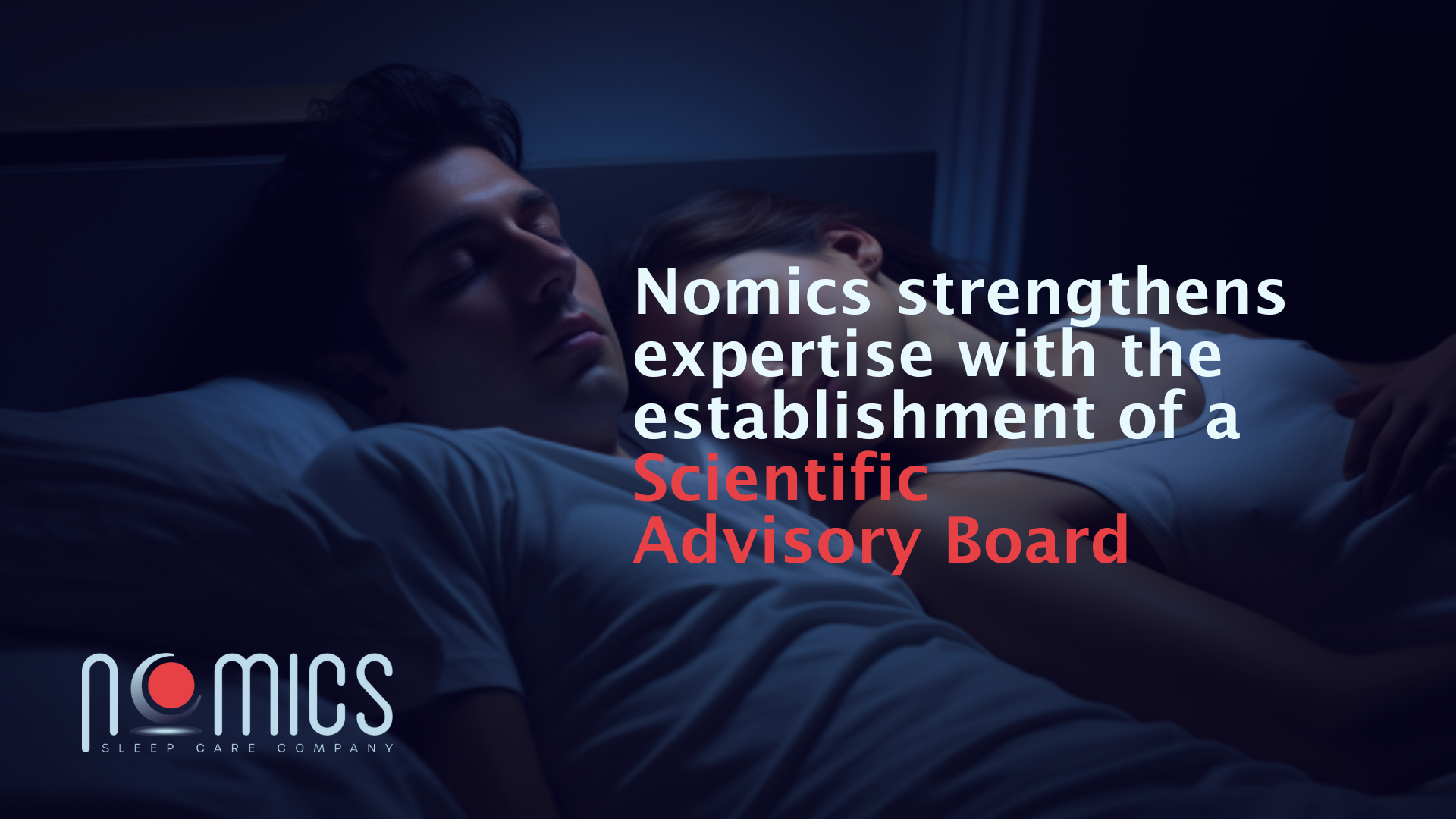A bite of the future – A new biomarker in sleep medicine?
Despite advancements in sleep medicine, many sleep disorders remain underdiagnosed due to the limitations of traditional respiratory polygra…
Cardiologists should be aware of the significant prevalence of respiratory sleep disorders and the intricate link between cardiovascular and respiratory health. Sleep apnea and similar conditions can profoundly affect cardiovascular health, leading to risks like hypertension, arrhythmias, and heart disease. Early recognition and management of these disorders are essential for comprehensive patient care and allows cardiologists to make timely screening and referrals for specialized care when needed and engage in collaborative efforts with somnologists to provide holistic and optimized patient care.

Sleep-related breathing disorders are common, with up to 38% of the general population affected and 1 in 5 patients facing moderate to severe Obstructive Sleep Apnea (OSA) . Understanding the prevalence of SBDs and their implications on cardiovascular health is crucial. These disorders, particularly obstructive sleep apnea, disrupt a patient's sleep, leading to excessive daytime sleepiness, fatigue, mood disturbances, and cognitive decline. Identifying and addressing SBDs can significantly enhance a patient's quality of life. Beyond the obvious impact on sleep, SBDs extend their influence on cardiovascular, metabolic, and mental health(2-5).
Understanding the connection between sleep-related breathing disorders (SBDs) and the cardiovascular system is essential for providing comprehensive patient care. Indeed, studies have shown a high correlation between SBDs and the cardiovascular system(6). By identifying and managing SBDs, we can help reduce their cardiovascular consequences.
Research has shown that individuals with untreated OSA are at a heightened risk of developing hypertension(7). This relationship is particularly true in resistant hypertension(8) with one study showing that 83% of patients with resistant hypertension also had sleep apnoea(9).
Pulmonary hypertension and sleep apnoea are also connected, with the latter thought to play a role in the physiopathology of pulmonary hypertension. About 20% of patients with OSA have class III pulmonary hypertension(10).
OSA is common in patients with heart failure(6). Critically, OSA puts additional strain on the heart, reducing its ability to pump blood effectively and increasing morbidity and mortality(11).
Sleep-related breathing disorders can lead to arrhythmias. The clearest example is atrial fibrillation, as patients with OSA are four times more likely to develop atrial fibrillation(12).
OSA is strongly associated with an increased risk of coronary artery disease, heart attacks, and strokes. The repeated episodes of oxygen deprivation and increased stress on the heart during sleep can contribute to the development and progression of these conditions6.
In recent years, statements and guidelines issued by cardiology societies have shown an increased focus on sleep. Notably, the American Heart Association (AHA) published a statement in 2021 on the link between sleep disorders – sleep apnoea in particular, and cardiovascular health. In this statement, the association said:
The high prevalence and comorbidity of OSA in patients with CVD, coupled with evidence of improved patient-centered outcomes, mood, and work productivity with OSA treatment in patients with CVD, provide a rationale for OSA screening(13)Similarly, the European Society of Cardiology (ESC) has included sleep in its recent guidelines for several conditions such as heart failure, atrial fibrillation, or resistant hypertension. We will quickly discuss what the ESC recommends, but the general trend is clear: sleep disorders are frequently comorbid with cardiovascular conditions and impact each other significantly. Therefore, evaluating patients for sleep disorders, sleep apnoea at least, is necessary for the comprehensive management of their cardiovascular health.
Over a third of patients with heart failure suffer from sleep-disordered breathing, and this is particularly true in acute heart failure. Both central sleep apnea (CSA), obstructive sleep apnea (OSA), and a mixed pattern of both can be found and are associated with a poorer prognosis. Moreover, OSA also increases the risk of incident of heart failure in men.
Given the high frequency and the impact on prognosis, patients with heart failure can be investigated for sleep apnea. Questionnaires can be useful, but home monitoring can identify of sleep apnea and distinguish between the types.
Obstructive sleep apnea (OSA) is highly prevalent in patients with atrial fibrillation, with a prospective study finding a 50% prevalence. Indeed, OSA can facilitate arrhythmia through intermittent nocturnal hypoxemia/hypercapnia, intrathoracic pressure shifts, sympathovagal imbalance, oxidative stress, inflammation, and neurohumoral activation. Dramatically, OSA has a negative impact on treatment by reducing the success rate of key procedures: AADs, electrical cardioversion, and catheter ablation. Some studies have even shown that an appropriately treating OSA may improve rhythm control in patients with atrial fibrillation.
Therefore, the ESC recommends testing for OSA before treating patients with symptomatic atrial fibrillation to reduce its recurrences, although it doesn’t recommend how to test and manage OSA in this guideline.
Obstructive sleep apnea (OSA) is highly prevalent in patients with resistant hypertension, with a prevalence between 60% and 84%, possibly up to 90%.
Other sleep abnormalities can also be seen (e.g., shorter sleep duration, reduced sleep efficiency, reduced REM sleep). The mechanism behind this high rate of comorbidity is thought to be upper airway oedema and neck caused by increased fluid retention, probably due to a change in the production of aldosterone.
Treating OSA in patients with resistant hypertension leads to a statistically significant reduction of blood pressure. The ESC then recommends: “(…) given the high prevalence of often severe OSA in patients with RH and the potential benefit of CPAP to enhance BP control, clinicians should vigorously screen such patients for symptoms of OSA (…)”.
Sleep management is highlighted in the 2021 guidelines on the secondary prevention of stroke, jointly issued by the American Heart Association and American Stroke Association. Obstructive sleep apnea is common among patients with stroke (around 40%), but it is often underdiagnosed.
There is still a lack of evidence on the impact of treating OSA for the recurrence of stroke, but there is clear evidence showing that treating improves daytime sleepiness, blood pressure, sleep-related quality of life, and physical functioning. Because OSA screening questionnaires are inconsistent in patients with stroke and given the high prevalence, sleep studies are justified.
Brizzy is a novel addition to the toolkit of cardiologists for the screening of sleep-related breathing disorders. This tool has been developed with a vision to simplify the process of interpreting home sleep studies and to make the analysis more efficient, ultimately saving time.
Brizzy distinguishes itself through its simplicity. It features the innovative JAWAC sensor, a single, user-friendly device comprising two small electromagnets, one positioned on the forehead and the other on the chin. This setup is designed to track jaw movements, enabling easy and non-intrusive monitoring by patients in the comfort of their homes.
Brizzy's unique ability to measure jaw activity offers a reliable biomarker for respiratory effort, closely correlating with oesophageal pressure and EEG measurements. This precision allows for a more comprehensive assessment of sleep-related events, surpassing the capabilities of standard polygraphs. It's noteworthy that Brizzy's REIJAWAC index shows a high correlation with the Respiratory Disturbance Index (RDI) observed in lab-based polysomnography, as detailed in the study by Martinot et al., 2016 (18).
Complementing its physical attributes, Brizzy is supported by a user-friendly digital platform designed by Nomics. This platform interprets the collected data and generates automated, understandable reports. The inclusion of an automatic conclusion assists cardiologists in swiftly understanding the results, thereby enhancing patient care efficiency.
For more information on how Nomics tests can help in the screening and diagnosis of sleep-related breathing disorders, please feel free to contact us at cardio@nomicscare.com
These articles might interest you

Despite advancements in sleep medicine, many sleep disorders remain underdiagnosed due to the limitations of traditional respiratory polygra…

Nomics is proud to announce the formation of its multidisciplinary Scientific Advisory Board, comprising distinguished professors and doctor…

Today, Nomics Care, a Belgian MedTech company, announced the expansion of its operations into the Midlands, UK.